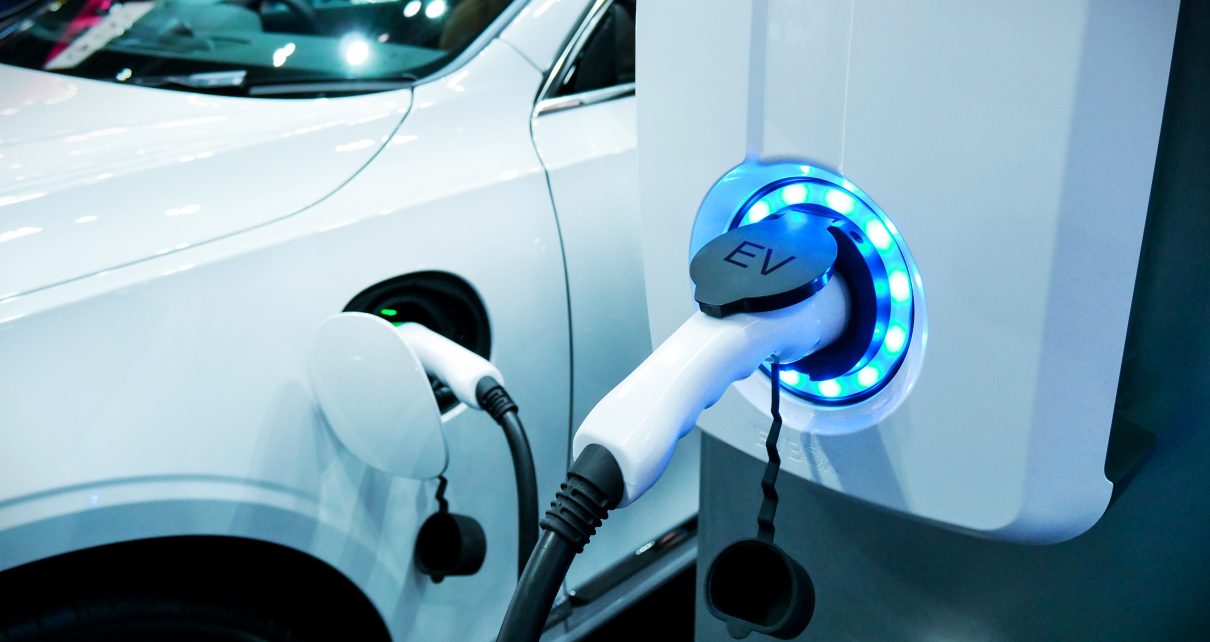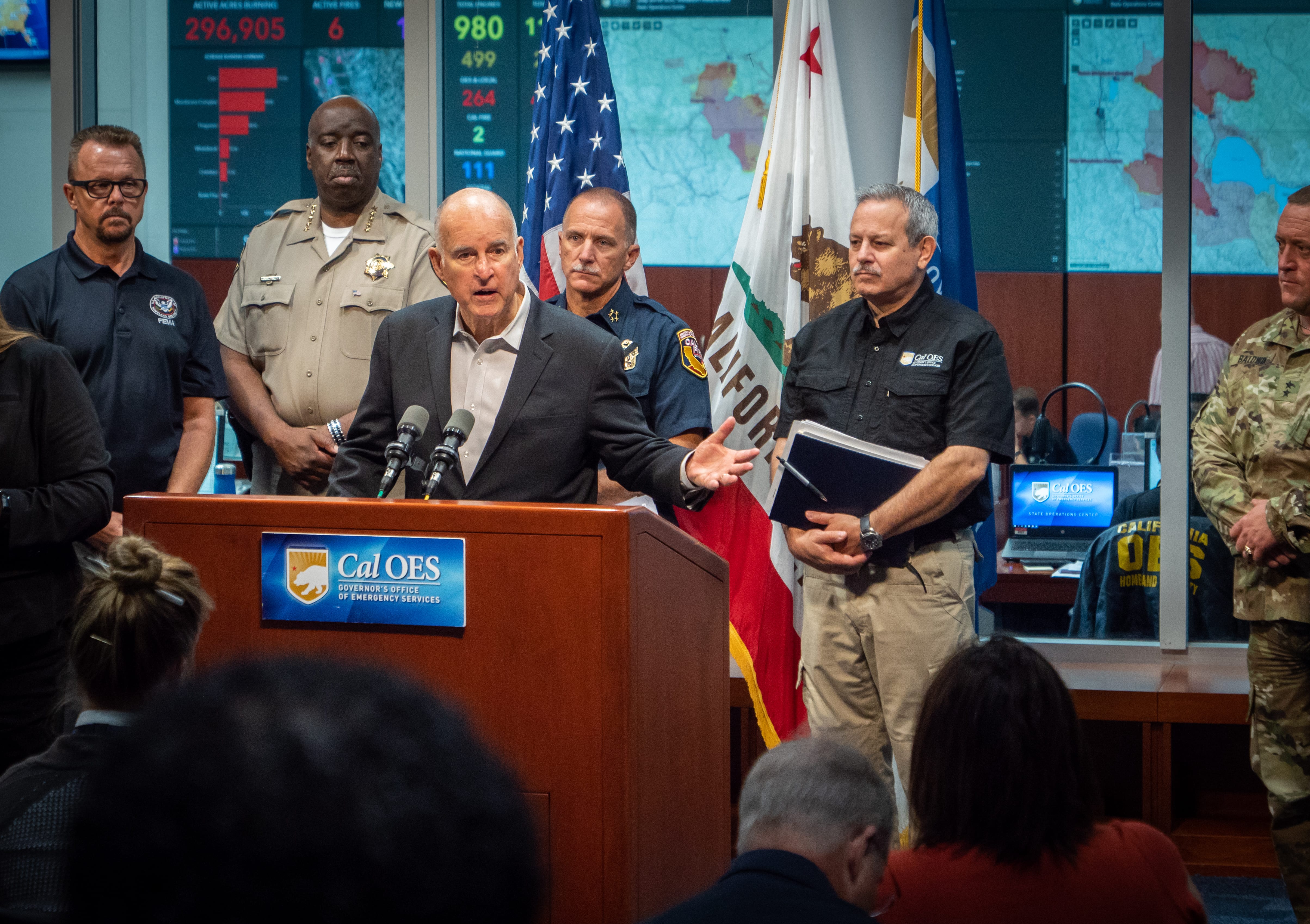
A power supply charging the battery of an electric vehicle. (Photo: Shutterstock/buffaloboy)
California Fires Cast Shadows on EV Mandates
‘If you have a lot of EVs in one place, it can only add to the complexity of fighting that fire’
By Robert Yeager, January 19, 2025 8:32 am
Raging California fires are casting shadows over the state’s 2035 requirement that all vehicles be electric powered.
In Los Angeles County, where robust sales helped propel Tesla to the state’s no. 2 ranking behind Honda, fire-displaced EV owners and evacuees waited in long lines to recharge their electric cars. Meanwhile, firefighters also waited to assess the scale and impact of super-hot lithium-ion battery fires on the area’s historic inferno.
A lingering question: how many vehicles famously abandoned by evacuees — vehicles that had to be bulldozed to clear a path for fire fighters — were actually EVs that had run low or out of their charge?
Meanwhile, even as Angelenos reeled from their disaster, a huge blaze erupted some 300 miles to the north at one of the world’s largest EV battery storage plants in Moss Landing. More than 1,000 residents were forced to flee as the flames sent out plumes of toxic smoke.
“No active fire suppression is taking place,” Monterey County officials said in a press release last Thursday. “The batteries must burn themselves out. No water can be used. This is standard action for battery fires.” A local newspaper labeled the blaze — the fourth such incident in that location in as many years — a possible “Three Mile Island” for the renewable energy industry.
In Los Angeles, where hundreds of firefighters were still battling that area’s historic inferno, “Right now there’s not much time to think about EV battery fires,” said Colin Noyes, a press officer for CalFire. “We’re too busy saving lives and homes that are burning up. We’ve got too many people and structures to worry about.”
A final assessment of the impact of EV battery fires will come later, Noyes said. However, he added, “there’s no question that if you have a lot of EVs in one place, it can only add to the complexity of fighting that fire.”
The current crop of lithium-ion batteries offer a good balance of power, energy and weight, but they come with inherent disadvantages, said Matt West, head of marketing at Alsym Energy, a Woburn, Mass., startup focused on developing alternatives to present-day EV batteries. With lithium-ion batteries, he said, if the barrier between their internal positive and negative electrodes is breached, the result can spiral into a fiery “thermal runaway.”
“These superhot fires (up to 5,000 degrees) are exponentially more difficult to extinguish than a conventional car fire,” warns Mr. West. “An EV fire can take many thousands of gallons of water to put out and they sometimes reignite days or even weeks later.”
• In 2021, a home belonging to a San Ramon, Calif., couple burned to the ground when their two garaged Teslas caught fire while they slept. One of the vehicles had been left on a charger; fire inspectors blamed a faulty battery or electrical system. “If we had lived upstairs, we’d be dead,” homeowner Yogi Vindum told the Washington Post. As it was, thousands of gallons of water were needed to extinguish the flames.
• In 2023, Beidi Chambers and her daughter Elyse, 12, died when their Tesla Model Y crashed into a tree and exploded in flames near their Los Gatos, Calif., home. “The firefighters and police were very gentle, but they wouldn’t let me near the scene,” said Beidi’s husband Christopher, who arrived shortly after the accident. “One of the firefighters came over to me and held me and made eye contact,” Mr. Chambers told local reporters. “And he just said keep your memories. Remember them that way because if we left and you saw them, then that’s something you would never forget.”
• Last November, three young residents of Piedmont, Calif., perished when their Tesla Cybertruck crashed into an embankment and burst into flames. Although local police with fire extinguishers quickly arrived at the scene, they were unable to quell the blaze and the three burned to death in the car. The city’s fire chief said he did not think the EV battery caused the inferno but the accident is currently being investigated by the National Highway and Traffic Safety Administration. It was the second fire-involved fatal accident in a Tesla Cybertruck.
Of course, petroleum-fueled vehicles catch fire too — usually due to collisions or fuel leaks. Still, the recently revealed drawbacks of current EVs and their lithium-ion batteries give one pause. Would policymakers be wise to follow the advice of auto dealers and tap the brakes on flat, politically-driven EV dictums? Don’t hybrids and plug-in hybrids also offer innovation, and a safer, more reliable middle-ground for reducing our use of fossil-fuel?
- California Fires Cast Shadows on EV Mandates - January 19, 2025





Thank you for posting this article. When the tragedy in Piedmont happened I started to dive into some research and I can not believe how deadly these EVs can be.
An automobile should be able to hit a curb without killing the occupants.
Where is Ralph Nadar on this?
I am sure that when he demanded that we need seat belts and , later, airbags in vehicles
it probably felt undoable.
At the very least , EV makers should be required to provide the fire suppression blanket to every fire department in the US.
The recent fires got me thinking about how many EVs were in the garages of burnt homes?
I wonder if the fire can be watched from the satellites and if there would be a little explosion when one caught fire.
We should not just give a free pass to EV makers and we will NOT give up our traditional automobiles for a rolling deathtrap .